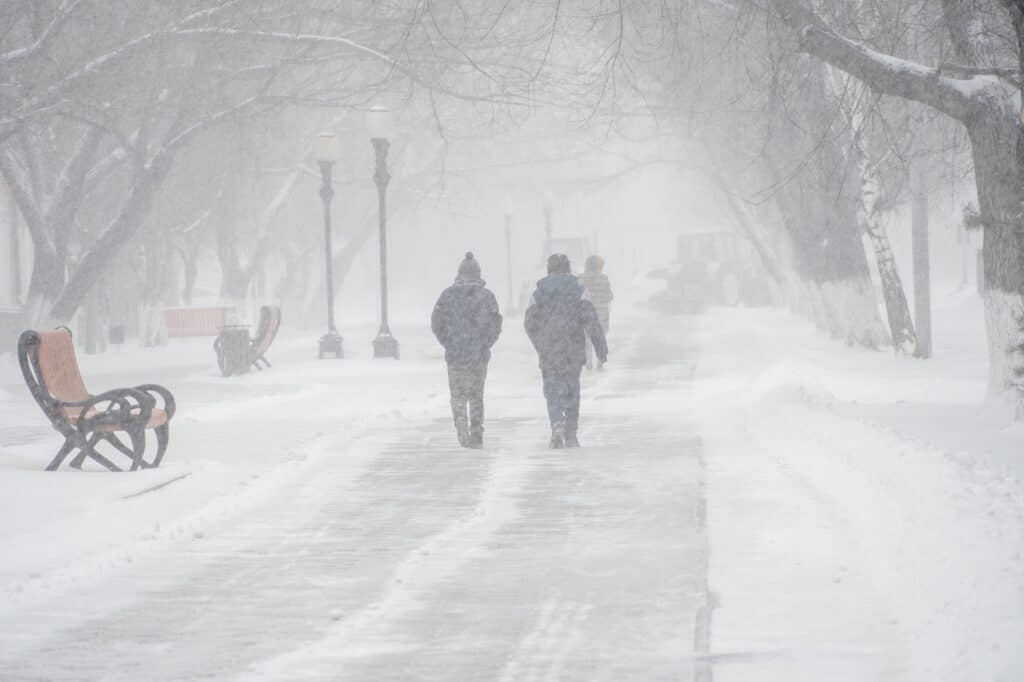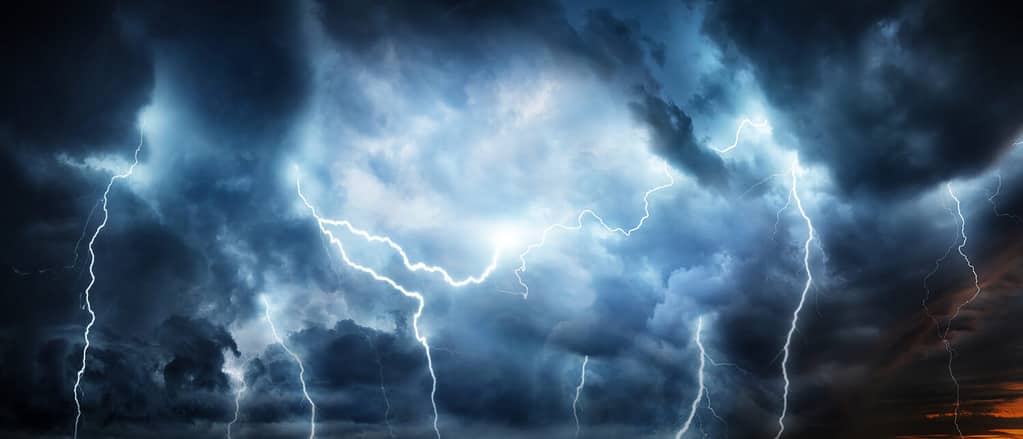Do you know the highest temperature on record in Wake County?
North Carolina’s hot season is May 1 through September 30, with summers being much hotter than others. This was definitely the case back in 2012 when Wake County’s residents had to sweat through an unbelievably high temp. But it wasn’t just Wake County that was feeling the heat. There was a massive heatwave impacting the entire Southeast United States.
Only a few phenomena have captured the world’s attention quite like deadly heatwaves. The rise in global temperatures presents a major challenge to humans, wildlife, and the entire environment. Follow along as we go back in time to look at the impact of the highest temperature ever recorded in North Carolina’s Wake County. We’ll also give you some great tips to beat the heat.
What’s the Highest Temperature for Wake County North Carolina?
The highest temperature recorded in Wake County, NC, was 105 °F, on July 8, 2012. This temperature occurred on three different days that year. The county reached 105 °F on July 8, June 30, and June 29.
Some parts of the state got even hotter that year. In 2012, the highest temperature recorded in North Carolina was 107°F, at Hamlet Richmond and Brunswick County. Utility companies faced challenges in restoring power to customers amid high temperatures. Thankfully, cooling shelters opened in various locations to help people cope with the scorching temps.
Wake County Weather Records

In 2007, Wake County broke another record with 168 consecutive days surpassing exceeding 80 °F.
©Leestudio/Shutterstock.com
Wake County’s weather history has a few stand-out moments that have left their mark. Extreme heat is a recurring theme for Wake County’s weather. 2007 saw the most days in a year with temperatures exceeding 80 °F, totaling 168 days. Then 2010, recorded 91 days with temperatures surpassing 90 °F, and 1999 witnessed 12 days with temperatures exceeding 100 °F.
North Carolina, particularly Raleigh, has been no stranger to the whims of weather, experiencing hot and cold extremes throughout their history. For instance, in the summer of 2010, the record books tell the tale of a very warm summer. The highest daily low temperature on record was a warm 80 °F on July 25. But if we go back to the frosty winter of 1899, another chapter unfolds. In 1899, the lowest daily high temperature was a freezing 10 °F on February 13, 1899.
As long as we’re talking about cold weather, we also have to mention 1985. That’s the year the county shivered through not one, but two bone-chilling days with temperatures plunging below the dreaded 0 °F mark. Finally, the lowest temperature recorded in Wake County, NC, was -9 °F, on January 21, 1985.
Rainfall Records

The record for the highest daily rainfall was October 8th, 2016, when Wake County received 6.4 inches.
©MakDill/Shutterstock.com
Now let’s talk rain in North Carolina. On October 8, 2016, Wake County experienced its highest daily precipitation, for a total of 6.4 inches. It was one of those days where you had to have an umbrella with you anytime you stepped outside.
October 8th may hold the record as the rainiest day, but it doesn’t hold a record as the rainiest month. That title goes to September of 1999 when 21.8 inches fell on the county. Meanwhile the year 1936 stands out for its highest yearly precipitation at 64.2 inches.
Snowfall Records

On January 25, 2000, Wake County had its heaviest snowfall on record totaling 17.9 inches.
©Sambulov Yevgeniy/Shutterstock.com
As winter knocks at the door, rain turns to snow. Yet, for Wake County, the cold weather isn’t always predictable. The onset of freezing temperatures varies from one year to the next. November 6, 1953, marked the earliest snowfall in a season, while the latest snowfall occurred on April 18, 1983. The county’s earliest freeze took place on October 2, 1947, making things hard for trick-or-treaters.
What was even more startling was what took place while spring was in full swing. On May 10, 1977, the county had its latest freeze on record. Instead of barbecuing in the backyard, people had to stay cozied up indoors.
January 25, 2000, witnessed the heaviest snowfall, measuring a substantial 17.9 inches, turning the landscape into a winter wonderland. January 26, 2000, also gets its share of the spotlight with a generous 20.0 inches of snow. But that’s not all, January 2000 also claims the title for the most monthly snowfall (25.8 inches). And 2000 marks Wake County’s highest yearly snowfall (28.1 inches).
Average Temperatures in Wake County

Downtown Raleigh’s “feels like” temperature can be cooler due to the city skyline and wind effects.
©Kevin Ruck/Shutterstock.com
Now that you know about the extreme weather records, let’s talk averages. When things aren’t unusually hot or suddenly cold, what’s the weather normally like? Wake County’s climate is wet and partly cloudy year-round. There are around 217 sunny days, compared to the U.S. annual average of 205 sunny days.
Why so warm? Wake County has a moderate subtropical climate, which means summers are hot and muggy, with high humidity. The hottest month is July, with an average high of 88°F and a low of 69°F. The best times for warm-weather activities are from early May to late June and from mid-August to mid-October.
Trying to escape the hot summer? Go Downtown. Downtown Raleigh’s “feels like” temperature can be cooler due to the city skyline and wind effects.
The winters here are mild in comparison to other areas in North Carolina. Averages range from the upper 30s to the low 50s during the winter months. The cool season lasts for 2.9 months, from December 1 to February 28, with an average daily high temperature below 58°F. The coldest month is January, with an average low of 33°F and a high of 51°F.
Wake County’s Hottest Months on Record

Wake County has a history of extremely hot months, with July and August making up a lot of the records.
©Ed Connor/Shutterstock.com
Let’s look at some months that were historically hot for Wake County, NC:
- August 10, 2016: Average temperature was 82.1°F with a high of 91.5°F and a low of 72.3°F.
- August 9, 1900: The day saw an average temperature of 82.2°F, a high of 93.2°F, and a low of 71.3°F.
- July 8, 2005: The average temperature for this day was 82.2°F, reaching a high of 92.9°F and a low of 71.6°F.
- July 7, 2010: With an average temperature of 82.3°F, the day’s high was 93.4°F and the low was 71.2°F.
Weather Patterns Impacting High Temperatures
When one unusually hot day turns into two or more, it’s a heatwave. A few of North Carolina’s most intense heatwaves took place in 1952, 1954, 2011, and 2012. These weather events have the biggest impact during the summer when baseline temperatures are already high.
Violent Thunderstorms

The 2012 heatwave was accompanied by violent thunderstorms driven by the extreme heat.
©Triff/Shutterstock.com
Sometimes extreme heat brings storms. When Wake County had its record-breaking temperature in 2012, it was during a heatwave. The intense heatwave took place in late June and early July 2012 across the eastern United States. Temperatures reached well over 100°F for consecutive days, with some areas experiencing temperatures exceeding 110°F. To make matters worse, the heatwave was accompanied by some serious thunderstorms.
Violent severe thunderstorms struck Eastern North Carolina on July 1, 2012. The storms were driven by a combination of extreme heat in the Southeast, along with exceptionally high moisture levels, making the air unstable. The unusual atmosphere contributed to the intensity of the thunderstorms.
While the thunderstorms offered immediate relief from the heat, they also caused fallen trees and structural damage. Major property insurers, USAA and Nationwide, reported receiving over 12,000 claims from weekend storms, mostly for house damage. Widespread power outages also affected numerous states, with utilities reporting catastrophic damage to power grids. Some residents had to wait several days to get their electricity back. And that meant having to find ways other than at-home air conditioning to stay cool.
Heat Dome
In the Southeast US, heat waves can result from high-pressure systems trapping heat under a dome-like atmosphere, which is called a heat dome. Conditions trap hot air due to high-pressure systems. This trapping of hot air creates a dome-like structure where the heat accumulates and intensifies. Heat domes are one of the biggest contributing heatwave factors. Under their influence, temperatures can soar to extreme levels, often breaking records for the region.
How Did People Cope with the Heat?

To survive the extreme heat, Wake County residents had to stay indoors for most of the day.
©leolintang/Shutterstock.com
To survive, the deadly temperatures, Wake County residents had to limit outdoor activities during the hottest parts of the day. For many, going outside at all was out of the question. It was just too hot. If you had power and a working ac, inside the house was the safest place to be. Many without ac made their way to cooling centers or air-conditioned spaces like libraries.
“Feels Like” Temperature
North Carolina summers have high humidity, which means the “feels like” temperature can be much higher than the real temp. If you have a temperature of 105°F and a high humidity level, the heat index would likely result in a “feels like” temperature significantly higher than the actual 105°F. It could feel closer to or even exceeding 110°F or more.
The specific heat index value depends on the exact humidity level at the time. Heat index values over 105°F are extremely dangerous. If proper precautions aren’t taken, these temperatures can lead to heat-related illnesses and heatstroke.
How Wake County Is Preparing for Future Heatwaves
North Carolina’s heat risk is on the rise. Heat waves of three or more consecutive days are becoming more likely. Thankfully, elected officials, organizations, and community members are doing what they can to help residents survive the hot temps. For instance, North Carolina has been a part of the CDC’s Building Resilience Against Climate Effects (BRACE) grant program since 2010. The program involves a five-step process empowering health officials to prepare communities for extreme weather.
The five steps of the program include:
- Anticipate climate impacts and assess vulnerabilities.
- The project disease burden associated with climate change.
- Assess suitable public health interventions.
- Develop and implement a climate and health adaptation plan.
- Evaluate impact and enhance activity quality.
For more information on what the BRACE program is all about, check out CDC’s Climate and Health Evaluation page.
Operation Fan Heat Relief
“Operation Fan Heat Relief” was started by North Carolina’s Department of Health and Human Services, Division of Aging and Adult Services. The program is funded by donations from organizations like Duke Energy. These funds are used to purchase fans and a limited number of air conditioners. From May 1 to October 31, the program gives fans to people who qualify, like seniors and those with disabilities. Since it began, Operation Fan Heat Relief has given away over 3,000 fans and more than 20 air conditioners. To check if fans are available, call your local service provider.
Beat the Heat: Tips for Staying Cool

Use water to stay cool during heatwaves, you can soak your feet, and use a spray bottle to mist yourself.
©StacieStauffSmith Photos/Shutterstock.com
How can you beat the heat? Here are a few suggestions to stay cool:
- Drink plenty of water.
- Avoid heavy meals that can heat up your body.
- Wear breathable clothing.
- Stay indoors during the hottest parts of the day.
- Use fans to circulate cool air.
- Apply cold compresses to lower body temperature.
Consider setting up a cool zone for you and your entire family. Hot air rises, so lower floors, especially basements, can be cooler during the midday heat. For this reason, many families have found themselves riding out a heatwave in the basement.
Soak and Spray
Along with drinking plenty of water, you can also use water to keep things chill. Regularly soak your feet, and use wet towels on the back of your neck or the top of your head and the soles of your feet. You can also take cool showers, and use spray bottles for refreshing mistings.
Seek Out Air-Conditioning
If you don’t have air conditioning create a makeshift system by positioning a box fan towards an open cooler with ice. During peak heat hours seek refuge in air-conditioned public places like cooling centers, museums, libraries, malls, and theaters. Before you make the trip out to any location, call first. Double-check their hours to make sure they’ll be open when you arrive. The last thing you want is to take a hot drive, just to turn around and come home.
Wellness Checks
Take time to perform wellness checks for neighbors, loved ones, and any vulnerable people you know. Elderly individuals and those with medical conditions can suffer the worst when the heat strikes. Set up a daily calling schedule to keep tabs, so you know how everyone’s doing. Even a quick text check-in can do the trick.
Heat-Proof Your House

Perform regular maintenance on your air conditioning system to make sure it’s ready for a heatwave.
©Andrey_Popov/Shutterstock.com
How can you prep your home for extreme temps? Start by being proactive, and taking measures before things heat up. A few proactive solutions include insulating and sealing your home, improving ventilation, and creating shade.
Add insulation to your attic, walls, and crawl spaces to prevent heat transfer. Then, seal air leaks around windows, doors, and electrical outlets to keep cool air in and warm air out. Next, ensure proper airflow by maintaining fans and air conditioning systems.
Throughout the year, make sure you lean or replace air filters regularly. If your AC is making a strange sound, get it checked out sooner than later.
Finally, make some shade in your yard by strategically planting trees. You could also look into applying a reflective coating on your roof to help cool things down.
Protecting Pets During Heatwaves

Dogs and cats regulate body temperatures through panting, excessive panting can indicate heat stress.
©Reddogs/Shutterstock.com
Don’t forget, animals suffer in the heat too, so keep a close eye on all of your pets. Dogs and cats regulate their body temperature through panting. If you notice your four-legged friend is panting excessively, it could be a sign of heat stress. Take immediate action to help them cool down such as giving them a bath or wet towel to lie on. And always ensure pets have access to clean cool water.
The photo featured at the top of this post is © Ed Connor/Shutterstock.com
Thank you for reading! Have some feedback for us? Contact the AZ Animals editorial team.







